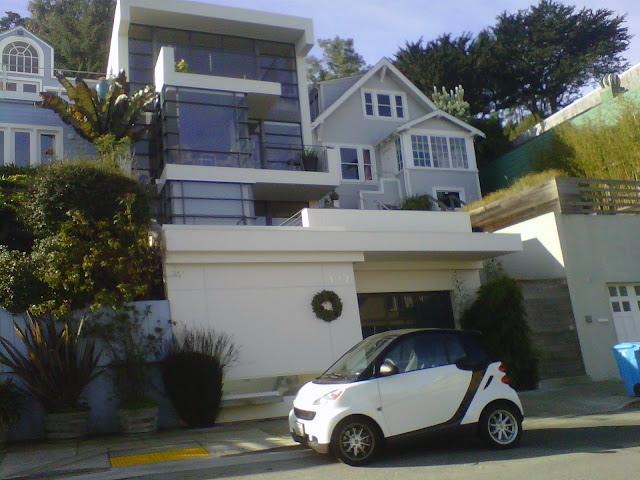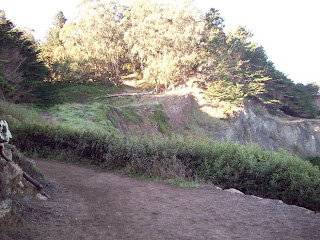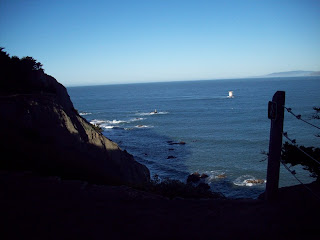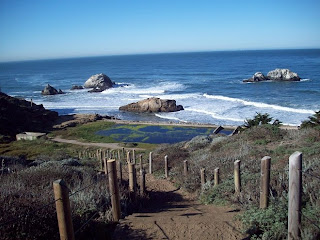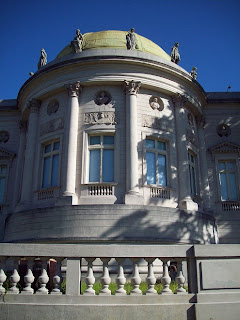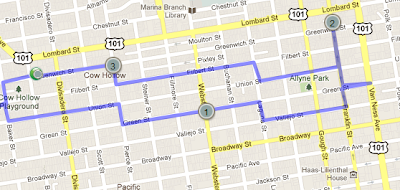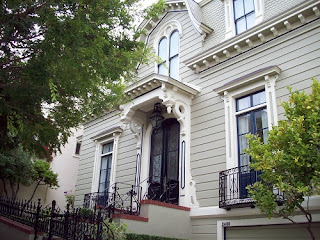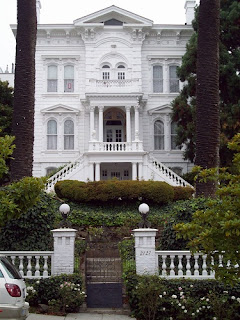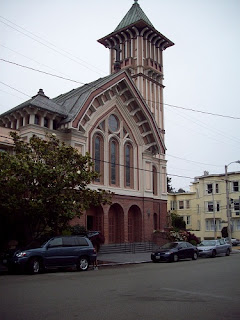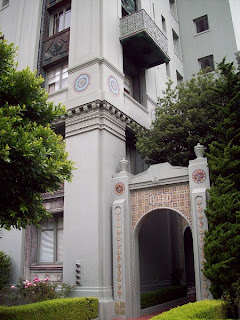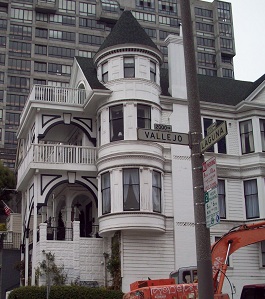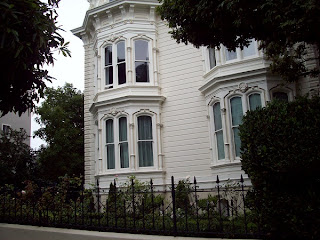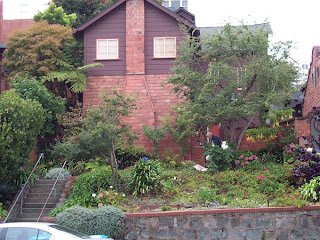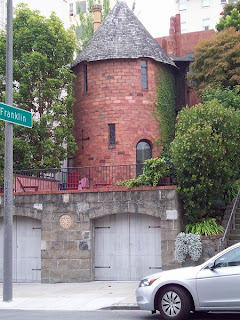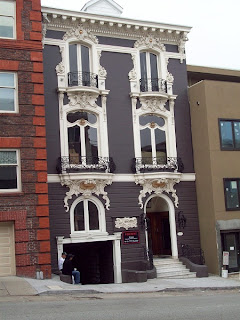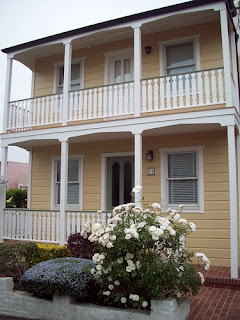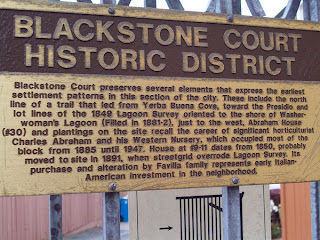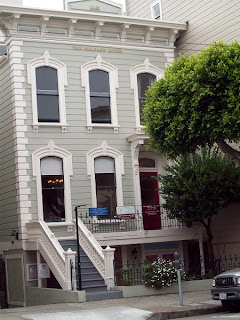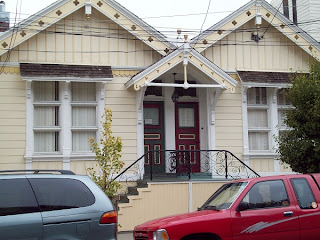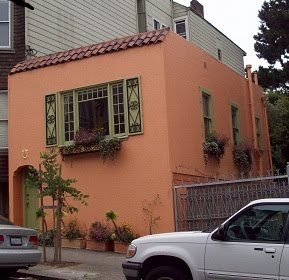This walk is through Chinatown, an easy 1.2 mile walk but with much to see in this dense neighborhood. The first photo is of the Donaldina Cameron House (1908) at 920 Sacramento. A solid clinker brick building significant for its history. The home was established in 1876 across the street as a home for Chinese girls seeking refuge from enforced prostitution and abusive employers. The clinker bricks are blistered from the heat of the 1906 fire as the house had to be rebuilt and bricks scavenged. The slave trade of Chinese girls continued into the 20th century, but was done by 1930. The building is now a rec center.
The next building is the YWCA building designed by Julia Morgan. This photo hardly does it justice and is wonderful with it’s subtle asian elements and elegant stance on the steep street. There is a serpent design about the door, recessed industrial sash windows with the cut out keystones and bronze and glass lantern next to the doorway. This building is now the Chinese Historical Society.
 |
| Chinese Historical Society. YWCA. 965 Clay St. |
Cooper Alley is a dead end alley that you will pass on the left as you head back up Jackson to Wentworth Alley.
 |
| Cooper Alley |
At 955 Grant is the narrowest storefront in Chinatown, measuring 6’10”, now a jewelry store.
 |
| 955 Grant Avenue |
At Ross Alley, previously known as “Stout’s Alley,” or “Old Manila Alley” since it was the favorite spot for the brothels and gambling spots of Filipinos and Latinos. This photo is of 37 Ross with its elegant gold lettering on black, is especially pretty.
This building at 743 Washington is the most fancifully docorated buildingg in the area and was Chincatown’s telephone exhchange until 1949. The building was constructed by the Bell System. The exchange served only Chinatown and the operators had to be fluent in English and five dialects of Cantonese. They used a hand painted telephone directory to direct calls until direct dial in 1949. This building is now a bank.
 |
| Old Chinese Telephone Exchange 1909 |
This photo is at the corner of Waverly and Washington as seen from Waverly. The next few photos are other sights on Waverly. Waverly Place was made “famous” by Amy Tan in her epic novel “Joy Luck Club” wherein one of the girls was named Waverly in honor of the street she lived on
The Tin How Temple is the city’s oldest Taoist temple on the top floor of 125 Waverly.
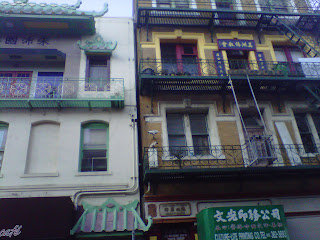 |
| Buildings on Waverly Place |
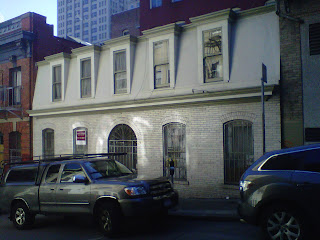 |
| 761 Commercial St. (1907) |

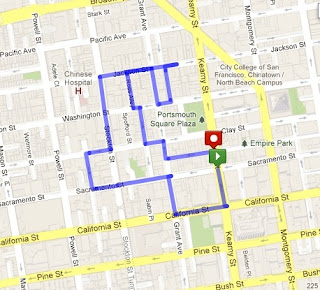
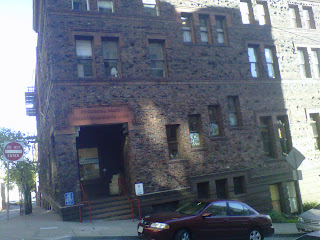
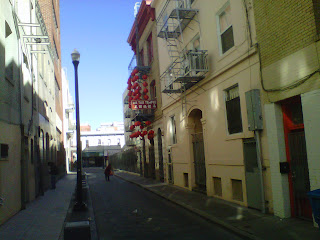
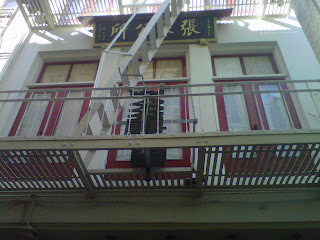
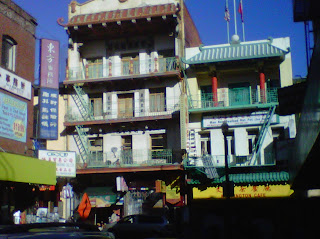
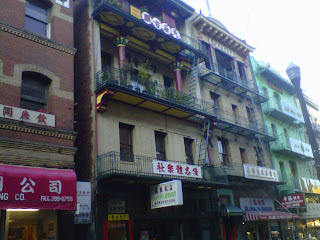


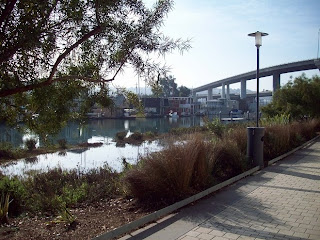


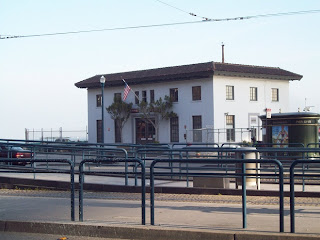
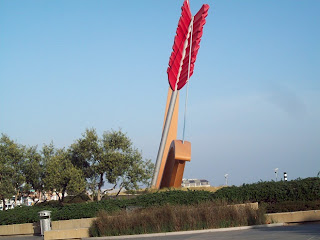


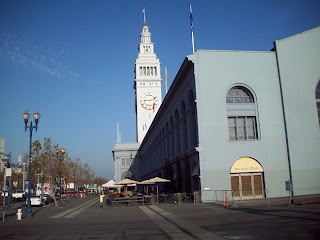


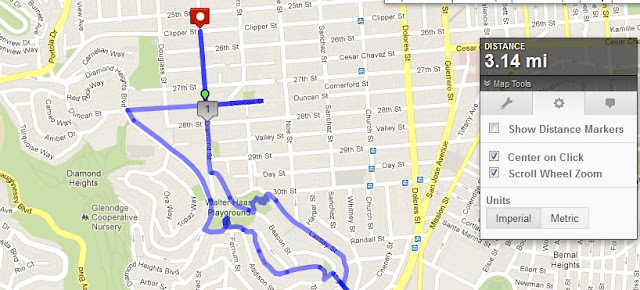.jpg)
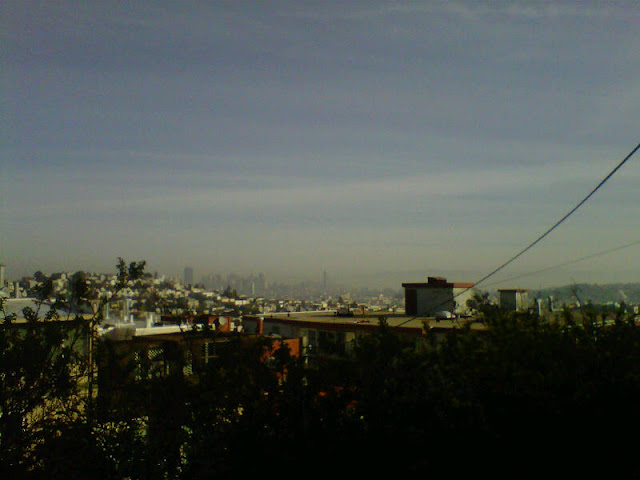
 D
D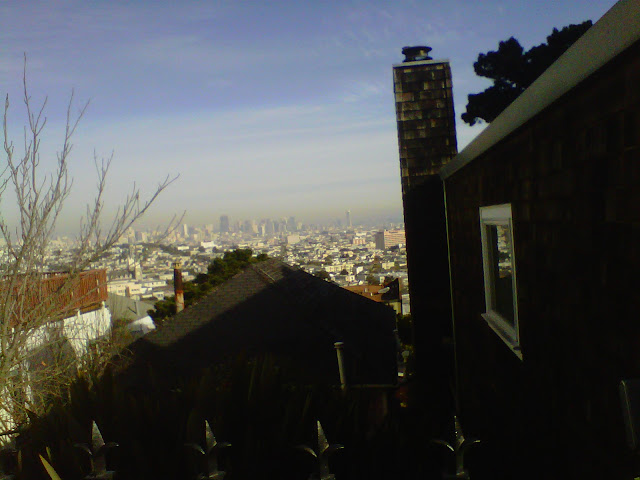.jpg)
